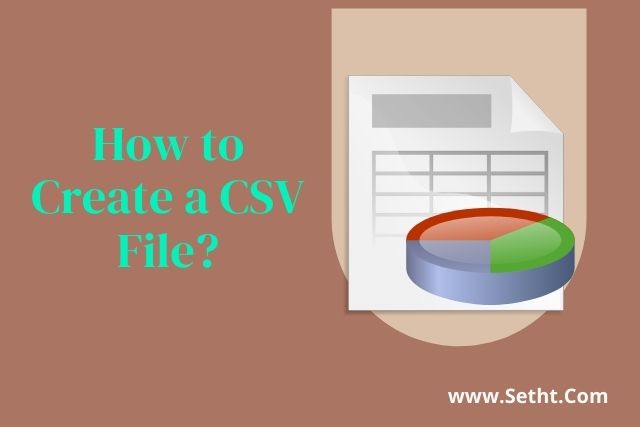Table of Contents
C++ is a powerful programming language that offers a rich set of data types for developers to handle various kinds of information. Understanding these data types is crucial for beginners to effectively store and manipulate data within their programs. This guide provides an overview of the fundamentals of C++ variables, explores the different data types available, delves into operators and expressions, and discusses controlling program flow, as well as more advanced data structures and memory management techniques.
Key Takeaways
- C++ variables are containers for data storage, with types such as ‘int’, ‘double’, ‘char’, ‘string’, and ‘bool’ representing different kinds of data.
- Operators in C++ include arithmetic for calculations, assignment for updating variables, comparison for testing values, and logical for boolean expressions.
- Control structures such as if-else statements, loops (while, for), and switch statements are essential for directing the flow of a program based on conditions.
- Advanced data structures like arrays and custom types using structures, along with memory management using references and pointers, provide powerful ways to manage complex data.
- A solid understanding of C++ data types and control structures is fundamental for writing efficient and effective code in the language.
Fundamentals of C++ Variables

Understanding Variables and Data Storage
In the realm of C++ programming, variables are fundamental. They act as containers that store data values which can be manipulated throughout the program. When a variable is declared, C++ allocates memory for it based on its data type. The size of the allocated memory can vary, ensuring efficient use of resources.
Variables in C++ are typed, meaning each variable is declared to be of a specific data type. The data type determines the size and layout of the variable’s memory, the range of values that can be stored within that memory, and the set of operations that can be applied to the variable.
Here is a list of some common data types in C++ and what they represent:
int– stores integers without decimals, such as 123 or -123double– stores floating point numbers with decimals, such as 19.99 or -19.99char– stores single characters, like ‘a’ or ‘B’string– stores sequences of characters, or text, such as "Hello World"bool– stores boolean values, true or false
To declare a variable, the syntax is straightforward: type variableName = value;. For instance, int myAge = 30; declares an integer variable named myAge with an initial value of 30. It’s important to note that the value of a variable can be changed throughout the program, and using the cout object with the << operator can display the variable’s value.
Declaring and Initializing Variables
In C++, declaring a variable is the process of defining its type and identifier, which is the name you’ll use to refer to it in the code. Initialization is the step where you assign an initial value to the variable. The syntax for declaring and initializing a variable is type variableName = value;, where type is one of the C++ data types, and variableName is the identifier you choose.
For example, to store an integer, you could write int myNum = 15;, which creates a variable named myNum of type int and initializes it with the value 15. It’s also possible to declare a variable without an initial value and assign it later. However, remember that assigning a new value to an existing variable will overwrite the previous one.
Variables in C++ must be declared before they are used. This ensures that the compiler knows the type and size of the data being dealt with.
Here’s a quick reference for some common C++ variable types:
int– stores integers without decimalsdouble– stores floating point numbers with decimalschar– stores single charactersstring– stores textbool– stores boolean values (true or false)
Variable Identifiers and Naming Conventions
In C++, the names given to variables, also known as identifiers, play a crucial role in the readability and maintainability of code. Proper naming conventions can significantly enhance code clarity and make it easier for others to understand the intent of the variables. When naming variables, it’s important to start with a letter or an underscore, followed by any combination of letters, digits, and underscores.
Here are some general guidelines for naming variables:
- Use descriptive names that convey the purpose of the variable.
- Stick to a consistent naming style, such as camelCase or snake_case.
- Avoid using reserved keywords as variable names.
- Keep names short yet meaningful.
Variable names should not start with digits and should avoid including special characters or spaces.
By adhering to these conventions, developers ensure that their code is not only functional but also accessible and easier to debug. Remember that while the compiler may not enforce these guidelines, they are best practices that contribute to the quality of your code.
The Role of Constants in C++
In C++, constants play a crucial role in ensuring the integrity of data. Once a constant is declared, its value cannot be altered, which prevents accidental modification of values that are meant to remain static throughout the program. This is particularly important for values that represent fixed quantities, such as mathematical constants or configuration settings.
Constants are declared using the const keyword, followed by a data type, and then the variable name and value. For example, const int DAYS_IN_WEEK = 7; defines a constant integer for the number of days in a week.
Constants provide a safeguard against errors that can arise from changing values that should remain fixed. By using constants, developers can create more reliable and maintainable code.
It’s also worth noting that C++ supports the constexpr keyword, which allows the compiler to evaluate the value of a constant at compile time, further optimizing the program.
Diving into C++ Data Types

Basic Data Types Overview
In C++ programming, data types are foundational concepts that define the type of data a variable can hold. Understanding these types is crucial for effective coding and memory management. The primary data types include integers, floating-point numbers, characters, strings, and booleans.
intfor integers, such as 123 or -456doublefor floating-point numbers, with decimals, like 19.99 or -19.99charfor single characters, ‘a’ or ‘B’stringfor text, "Hello World"boolfor boolean values, true or false
Each data type serves a specific purpose and occupies a certain amount of memory. For instance, an int typically requires 4 bytes of memory, while a double might use 8 bytes, allowing it to represent a wider range of numbers with greater precision.
It’s important to choose the right data type for the task at hand to ensure efficient use of memory and to avoid data overflow or precision loss.
Working with Numbers: Integers and Floating-Points
In C++, numerical data types are divided into two main categories: integers and floating-point numbers. Integers are whole numbers without decimal points, such as int myNum = 5;. On the other hand, floating-point numbers allow for the representation of fractional parts, like double myFloatNum = 5.99;.
When working with floating-point numbers, precision is key. The setprecision function from the iomanip library enables you to control the number of significant digits displayed. For example, cout << fixed << setprecision(8) << myFloatNum; will output the number with eight digits after the decimal point.
It’s important to understand the distinction between the default precision and the precision set by setprecision. The default precision typically displays six decimal digits, while setprecision allows for customization of this output.
Understanding how to manipulate the precision of floating-point numbers is crucial for tasks that require a high degree of accuracy, such as scientific calculations or financial computations.
Character and String Types for Textual Data
In C++, textual data is primarily handled through char and string types. The char type is used to store single characters, like ‘A’ or ‘z’, and is enclosed in single quotes. On the other hand, strings are sequences of characters used to represent words or sentences and are enclosed in double quotes.
charexample:char letter = 'A';stringexample:string greeting = "Hello, World!";
While char is a fundamental data type in C++, string is part of the C++ Standard Library and offers a rich set of functions for string manipulation, including concatenation, finding substrings, and comparing strings.
Understanding how to work with these types is essential for handling text in your programs. For instance, you might use a char to analyze individual characters in a user’s input or a string to store and manipulate longer text data.
Boolean Data Type for True/False Values
In C++, the bool data type is used to store values that can only be true or false. Boolean variables are fundamental in controlling program flow, as they are often the result of comparison and logical operations that determine the direction of execution.
truerepresents a condition that has been met, or a ‘yes’ situation.falseindicates the opposite, a condition that is not met, or a ‘no’ situation.
Booleans are typically used in conditional statements like if, else if, and else, as well as in loops and other control structures. They are essential for making decisions in code.
The simplicity of the boolean data type belies its power in programming. With just two possible values, it enables complex decision-making processes within a program.
Operators and Expressions in C++

Arithmetic Operators for Mathematical Operations
In C++, arithmetic operators are the building blocks for performing basic mathematical operations. These operators include addition (+), subtraction (-), multiplication (*), division (/), and modulus (%) which returns the remainder of a division. Each operator serves a fundamental purpose in manipulating numerical data.
- Addition (
+) is used to sum two values. - Subtraction (
-) removes one value from another. - Multiplication (
*) combines two values in a multiplicative way. - Division (
/) splits one value by another, yielding the quotient. - Modulus (
%) provides the remainder after division between two integers.
It’s essential to understand the precedence of these operators to ensure the correct order of operations in expressions. For instance, multiplication and division have higher precedence than addition and subtraction, which can affect the outcome of complex expressions.
When using these operators, it’s important to be aware of the data types involved to avoid unexpected results, such as integer division truncating the decimal part. By mastering arithmetic operators, you can perform a wide range of mathematical calculations within your C++ programs.
Assignment Operators and Variable Updates
In C++, assignment operators are used to assign values to variables. The most common assignment operator is the = sign, which you’ve likely seen in variable declarations. However, C++ also offers compound assignment operators that combine arithmetic operations with assignment, simplifying code and potentially improving performance.
For example, the += operator adds the right operand to the left operand and then assigns the result to the left operand. This is particularly useful when you want to update a variable’s value based on its current value. Here’s a quick reference table for some of the compound assignment operators:
| Operator | Example | Equivalent to |
|---|---|---|
+= |
a += b |
a = a + b |
-= |
a -= b |
a = a - b |
*= |
a *= b |
a = a * b |
/= |
a /= b |
a = a / b |
%= |
a %= b |
a = a % b |
Remember, when you assign a new value to an existing variable, it overwrites the previous value. This is a fundamental aspect of working with variables in C++.
Understanding how to effectively use assignment operators is crucial for managing state within your programs and for implementing algorithms that require iterative updates to variable values.
Comparison Operators for Value Testing
In C++, comparison operators are used to compare two values and determine the relationship between them. These operators return a boolean value, either true or false, based on whether the comparison is valid.
Comparison operators include:
==(equal to)!=(not equal to)>(greater than)<(less than)>=(greater than or equal to)<=(less than or equal to)
When writing conditions for control flow statements like if, while, or for, comparison operators are essential for testing variable values and making decisions.
It’s important to use the correct operator for the intended comparison to ensure the logic of your program is accurate. Misusing comparison operators can lead to unexpected results and bugs in your code.
Logical Operators for Boolean Expressions
In C++, logical operators are the building blocks for constructing complex Boolean expressions. These operators evaluate expressions to a Boolean value, true or false, and are essential for controlling the flow of a program based on conditional logic. The most commonly used logical operators are && (logical AND), || (logical OR), and ! (logical NOT).
&&returnstrueif both operands are true.||returnstrueif at least one operand is true.!negates the truth value of its operand.
Logical operators allow developers to combine multiple conditions and make decisions in their code more effectively.
Understanding how to use these operators correctly is crucial for implementing decision-making processes within a program. For instance, you might want to execute a block of code only if multiple conditions are met, or perhaps you want to ensure that a certain condition is not true before proceeding.
Controlling Program Flow with Conditions and Loops

Making Decisions with if-else Statements
In C++, the if-else statement is a fundamental control structure that allows for conditional execution of code segments. The condition within an if statement is evaluated, and if it’s true, the code block that follows is executed. If the condition is false, the code block under else is executed instead.
- The
ifstatement can stand alone, without anelse. - An
else ifcan be used for multiple conditions. - The shorthand
if..else(ternary operator) is useful for simple conditions.
Remember, conditions must return a boolean value to determine the flow of execution. Proper use of these statements is crucial for creating responsive and dynamic programs.
Repeating Actions with While and For Loops
In C++, while and for loops are fundamental tools for executing a block of code multiple times. While loops continue to run as long as the specified condition is true, making them ideal for situations where the number of iterations is not known in advance. For loops, on the other hand, are typically used when the number of iterations is predetermined.
- While Loop: Repeats a block of code while a certain condition is true.
- For Loop: Iterates over a sequence or range, executing a block of code a specific number of times.
Both types of loops enhance code efficiency and readability by eliminating the need for repetitive code structures. They are essential for tasks such as iterating over arrays, processing user input, or implementing timing functions.
It’s important to manage loop control carefully to avoid infinite loops, which occur when the loop condition never becomes false. Properly incrementing counters or modifying the loop condition within the loop body can prevent such issues.
Switch Statements for Multiple Case Scenarios
The switch statement in C++ offers a streamlined way to handle multiple case scenarios, where a single variable is compared against a series of values. Each value is referred to as a ‘case’, and the variable’s value determines which block of code will be executed. Switch statements are particularly useful when dealing with enumerated values or predefined constants.
When a match is found, the corresponding block of code runs until a break statement is encountered, which exits the switch. If no case is matched, an optional default case can be executed. It’s important to remember that without a break statement, execution will ‘fall through’ to subsequent cases, which can be both a feature and a pitfall.
The use of switch statements can greatly enhance the readability and maintainability of code that requires the evaluation of multiple conditions.
Here’s a simple example of a switch statement structure:
- Define the variable to be tested.
- Use the
switchkeyword followed by the variable in parentheses. - Inside the switch block, define cases with the
casekeyword followed by a colon. - Write the code to be executed for each case.
- End each case with a
breakstatement to prevent fall-through. - Optionally, include a
defaultcase for when no other case matches.
Controlling Loop Execution with Break and Continue
In C++, controlling the flow of loops is essential for writing efficient and effective code. The break statement is used to exit a loop prematurely when a certain condition is met. This can be particularly useful when searching for a specific item in a collection and you wish to stop the loop once the item is found.
The continue statement, on the other hand, skips the current iteration and proceeds to the next one if a specified condition occurs. It’s a powerful tool for avoiding unnecessary computations or for skipping over particular elements in a loop.
Here’s a simple example of how these statements can be used in a for loop:
breakexits the loop wheniequals 5.continueskips the iteration wheniis an odd number.
In practice, these statements can significantly alter the behavior of loops, making them more flexible and responsive to dynamic conditions within your program.
Advanced Data Structures and Memory Management
Understanding Arrays and Their Operations
Arrays in C++ are used to store multiple items of the same type together. Managing arrays effectively is crucial for writing efficient code. For instance, you can declare an array to hold 10 integers like this: int myArray[10];. It’s important to note that arrays in C++ are zero-indexed, meaning the first element is accessed with myArray[0].
To iterate over an array, you can use a loop. A for loop is commonly used for this purpose. Here’s an example of how to print each element of an array:
for(int i = 0; i < 10; i++) {
cout << myArray[i] << endl;
}
When working with arrays, you might need to know their size. Unfortunately, C++ does not provide a built-in way to get the size of an array if it’s passed to a function because the array decays into a pointer. However, you can use the sizeof operator to get the size of an array in bytes and then calculate the number of elements by dividing by the size of an element:
| Operation | Code Example |
|---|---|
| Get array size in bytes | sizeof(myArray) |
| Get number of elements | sizeof(myArray) / sizeof(myArray[0]) |
Arrays are a fundamental part of C++ programming, and understanding how to declare, access, and manipulate them is essential for any developer.
Utilizing Structures for Custom Data Types
In C++, structures, or structs, offer a way to group different data types together under a single name. Structures are essential for creating complex data types that mirror real-world entities. For instance, if you wanted to represent a book, you could create a struct with fields for the title, author, and number of pages.
Structures can also contain functions and support inheritance, allowing you to extend their functionality. This means you can create a base struct and then derive other structures from it, adding new properties or methods while retaining the base characteristics.
Structures are versatile tools in C++ that enable developers to construct organized and efficient code. They are particularly useful when managing data that comes as a collection of diverse elements.
Here’s an example of a simple struct in C++:
struct Book {
string title;
string author;
int pages;
};
Managing Memory with References and Pointers
In C++, managing memory efficiently is crucial for building performant applications. References and pointers are two constructs that provide powerful means to manipulate memory directly. References act as an alias for another variable, allowing for more intuitive code when passing parameters to functions or when returning multiple values from functions.
Pointers, on the other hand, hold the memory address of a variable. They enable dynamic memory management, which is essential when the size of data structures cannot be determined at compile-time. Pointers can be created, dereferenced to access the value they point to, and modified to point to different addresses.
Understanding the distinction between references and pointers, and when to use each, is a fundamental aspect of C++ programming that can greatly impact the efficiency and safety of your code.
Here is a brief comparison of references and pointers in C++:
- References cannot be null and must be initialized when declared.
- Pointers can be null, allowing for checks against uninitialized or invalid memory access.
- References provide a simpler syntax for certain operations, while pointers offer more flexibility and control.
- Pointers are necessary for dynamic memory allocation with
newanddelete.
Conclusion
As we wrap up our beginner’s guide to understanding C++ data types, we hope that the concepts of integers, floating-point numbers, characters, strings, and booleans are now clearer. These fundamental building blocks are crucial for developing robust C++ applications. Remember that choosing the right data type for your variables can optimize memory usage and enhance performance. Keep practicing with examples, and don’t hesitate to refer back to this guide or consult the wealth of resources available online, such as cplusplus.com, for further learning. With a solid grasp of data types, you’re well on your way to mastering C++ programming.
Frequently Asked Questions
What is a variable in C++?
A variable in C++ is a container for storing data values. It has a specific type that determines the size and layout of the variable’s memory, the range of values that can be stored, and the set of operations that can be applied to the variable.
How do you declare and initialize variables in C++?
In C++, you declare a variable by specifying its type followed by its name. You can initialize a variable by assigning it a value using the equals sign (‘=’). For example, ‘int myNum = 5;’ declares and initializes an integer variable named myNum with the value 5.
What are the basic data types available in C++?
The basic data types in C++ include ‘int’ for integers, ‘double’ for floating-point numbers, ‘char’ for characters, ‘string’ for text strings, and ‘bool’ for boolean values representing true or false.
What are the rules for naming variables in C++?
Variable names in C++ must start with a letter or an underscore, followed by letters, digits, or underscores. They are case-sensitive and must not contain spaces or special characters, nor can they be reserved keywords.
How do you use if-else statements and loops in C++?
If-else statements in C++ are used to execute different blocks of code based on a condition. Loops, like ‘while’ and ‘for’, are used to repeat a block of code as long as a specified condition is true. ‘break’ and ‘continue’ can alter the flow of loop execution.
What are pointers and references, and how are they used in C++?
Pointers and references in C++ are used for indirect variable manipulation. A pointer stores the memory address of a variable, while a reference is an alias for another variable. They allow for more complex operations like dynamic memory management and passing variables by reference to functions.





